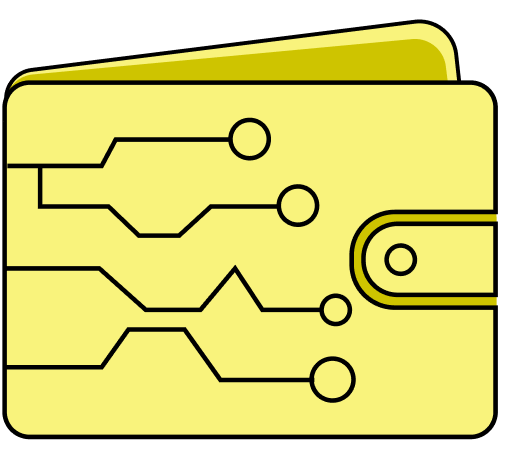Gem Wallet is a non-custodial cryptocurrency wallet that allows users to safely store, send, receive, and manage digital currencies. Built with simplicity and self-sovereignty in mind, Gem Wallet enables individuals to control private keys and assets without relying on centralized services. It is designed to interact with dApps and multiple blockchains, allowing both new and experienced users to transfer funds seamlessly.
Introduction
Gem Wallet is a non-custodial wallet that prioritizes control and security. Instead of granting access to third parties, users create and manage their keys locally. The wallet supports numerous cryptocurrencies and tokens and is designed for people seeking to integrate blockchain technology into practical, everyday use.
With the rise of decentralized finance, software like Gem Wallet connects everyday users to advanced blockchain networks. Core features include asset management, transaction signing, and dApp access, all delivered in a lightweight and easy-to-use interface.
History of Gem Wallet
Gem Wallet emerged from the demand for self-custody solutions in cryptocurrency. As decentralized networks grew, there was a need for a wallet that was simple, yet compatible with multiple assets.
While custody wallets and centralized exchanges were widely used, they faced criticism for hacks, frozen accounts, and lack of transparency. Gem Wallet was created to resolve these issues, allowing users to interact directly with blockchains while maintaining full control over their assets.
Over time, Gem Wallet expanded to support a growing number of assets, integrate with browsers, and seamlessly interact with decentralized applications. Its non-custodial focus and transparency have made it appealing to users valuing autonomy in digital finance.
Technology and Security
Gem Wallet is based on cryptographic security and transparency principles:
-
Private Key Management: Keys are generated and stored locally on the user’s device. They are never sent to centralized servers, reducing breach risk.
-
Encryption: Wallet data is encrypted to prevent unauthorized access if a device falls into the wrong hands.
-
Blockchain Integration: The wallet interacts directly with blockchain networks via nodes and APIs, enabling dApp use and transaction signing.
This structure allows Gem Wallet to empower users without adding unnecessary complexity.
Supported Assets and Blockchains
Gem Wallet supports a wide variety of cryptocurrencies. Initially compatible with Bitcoin (BTC) and Ethereum (ETH), it now supports ERC-20 tokens and other networks.
Stablecoins like USDT and USDC provide users with reduced volatility for daily payments. The wallet also aims for interoperability across emerging blockchain networks, including DeFi and Web3 applications, enabling both long-term holders and active traders to operate efficiently.
Features of Gem Wallet
Gem Wallet offers features that enhance usability:
-
Self-Custody: Users control their own keys and maintain full control of assets.
-
Multi-Asset Support: It allows storage and transfer of numerous cryptocurrencies and tokens.
-
Browser Integration: Users can connect the wallet to browsers to interact with dApps.
-
Transaction History: Past transactions are easily monitored through the wallet interface.
-
Cross-Platform Access: Available via desktop, extensions, or mobile apps.
These features make the wallet accessible to newcomers exploring blockchain and veteran users seeking a lightweight, agile tool.
How to Use Gem Wallet
Getting started with Gem Wallet is straightforward:
-
Installation: Download the wallet as a browser extension or mobile application.
-
Wallet Creation: During setup, a recovery phrase (seed phrase) is generated and must be stored securely for restoring access.
-
Adding Assets: Users can add cryptocurrencies by importing tokens or connecting to supported networks.
-
Sending and Receiving: The wallet provides addresses to receive crypto and allows easy transaction signing to send funds.
-
Using dApps: Through browser integration, users can link Gem Wallet to decentralized apps and authorize actions directly.
This simple workflow lowers the barrier for anyone interested in decentralized finance or experimenting with Web3.
Role within the Cryptocurrency Audience
Gem Wallet supports broader blockchain adoption through usability. While institutions dominate media coverage, tools like Gem Wallet empower individuals. By combining custody with a user-friendly interface, it maintains the decentralized ethos.
Wallets are central to cryptocurrency communities. Gem Wallet’s presence in tutorials, guides, and forums shows it is an important tool for blockchain users. Its non-custodial design raises awareness about self-sovereignty, making users less reliant on centralized applications.
Comparisons With Other Wallets
Gem Wallet can be compared to non-custodial wallets like MetaMask, Trust Wallet, and Phantom:
-
MetaMask: Popular for Ethereum and supporting networks, it has a robust ecosystem but can be confusing for new users.
-
Trust Wallet: Mobile-focused and holding many assets, but tied to Binance’s ecosystem.
-
Phantom: Primarily for Solana, Phantom focuses on a single chain, whereas Gem Wallet supports multiple chains.
Gem Wallet distinguishes itself with a balance of usability and wide compatibility, appealing to users who value flexibility without complexity.
Challenges and Limitations
Like other wallets, Gem Wallet faces obstacles:
-
User Responsibility: Lost recovery phrases or keys mean permanent loss of access.
-
Security Risks: Decentralization improves security, but phishing and malware threats remain.
-
Competition: The wallet market is competitive, with established players creating entry barriers.
Non-custodial wallets offer freedom but place full responsibility on the user.
Future Prospects
Gem Wallet’s future depends on adapting to changing blockchain ecosystems. Opportunities include:
-
Extended Blockchain Support: Adding compatibility with networks beyond Bitcoin and Ethereum.
-
DeFi Integration: Simplifying staking, lending, and borrowing directly in the wallet.
-
Mobile Expansion: Improving accessibility in mobile-first markets.
As crypto adoption grows, user-friendly wallets that maintain security will see increased uptake.
Conclusion
Gem Wallet is a non-custodial wallet allowing users to store, send, and use digital assets while retaining control of private keys. By combining simplicity, security, and multi-chain support, it supports practical adoption of decentralized finance and blockchain technology. Its user control aligns with crypto principles, while the simple design enables broad usability. Despite challenges, Gem Wallet represents a significant step toward everyday use and practical blockchain application.














 Twitter
Twitter
 Telegram
Telegram
